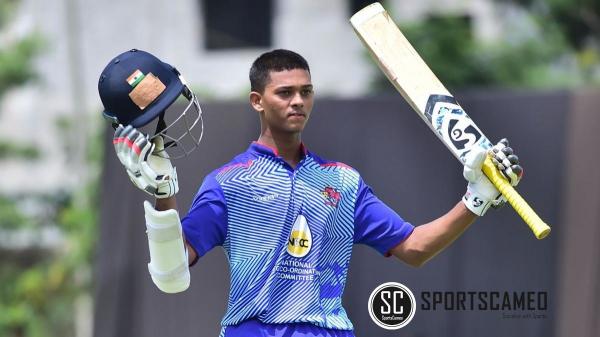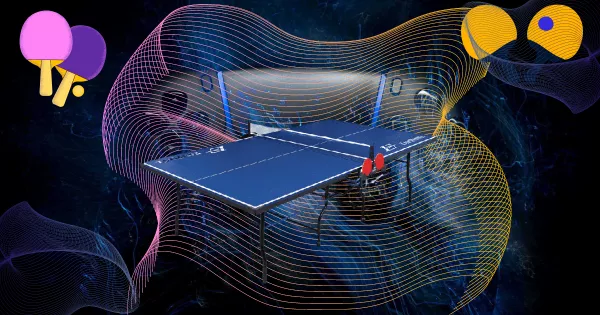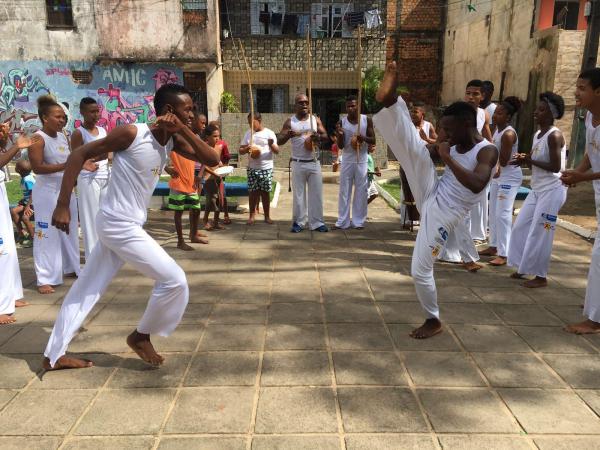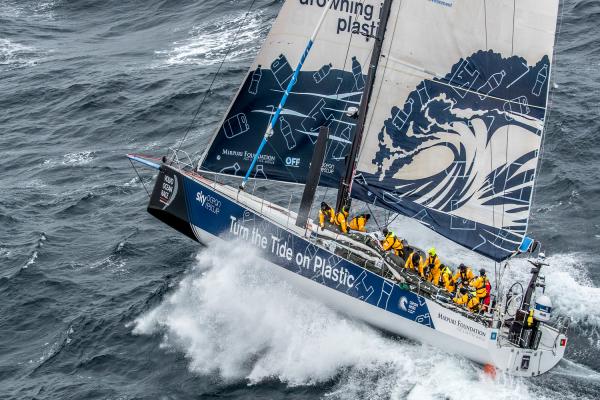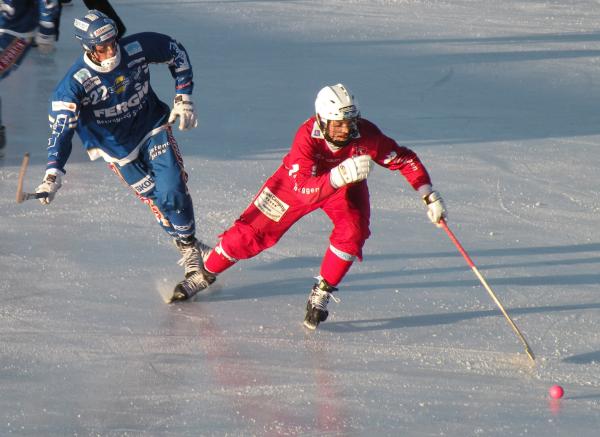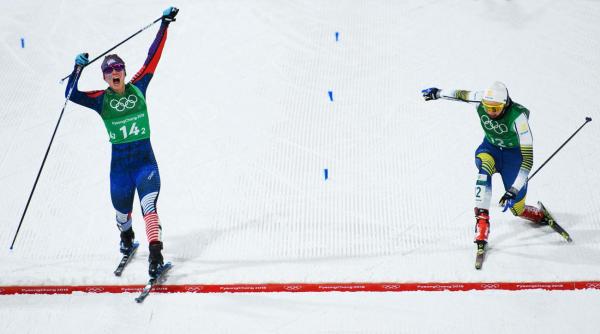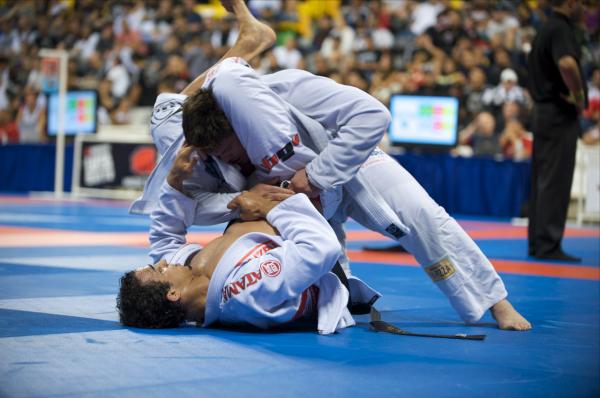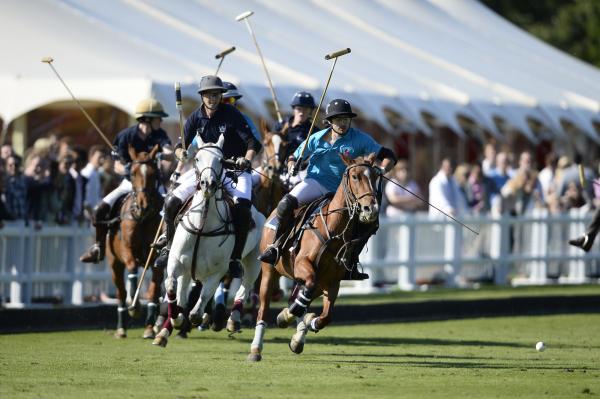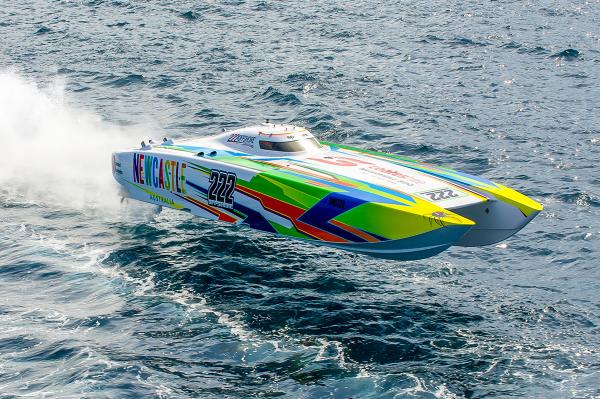Kiteboarding

Kiteboarding is an action sport combining aspects of wakeboarding, snowboarding, windsurfing, surfing, paragliding, skateboarding and sailing into one extreme sport. A kiteboarder harnesses the power of the wind with a large controllable power kite to be propelled across the water, land, or snow. Compared to the other sailing sports, kiteboarding is both among the less expensive (including equipment) and the more convenient. It is also unique in that it harvests the wind energy from a much larger atmosphere volume, comparing to sail size. Jump records (height, length, time) Nick Jacobsen achieved the world record for the highest kite jump measured by WOO Sports on February 19, 2017 in Cape Town, South Africa, during a session with 40-knot winds. Jacobsen's jump reached 28.6 meters high, with an airtime of 8.5 seconds. Jesse Richman holds the record for hangtime at 22 seconds, set at Crissy Field in San Francisco, California. Airton Cozzolino holds the record for strapless hangtime at 19 seconds. Equipment With the development of Internet markets for used goods, used but reliable kiteboarding equipment has become much less expensive, significantly reducing the barrier to the adoption of the sport. Moreover, the sport is utterly convenient regarding transportation and storage, since the kites are foldable and the boards are smaller than most surf and paddling boards. Power kites A LEI(R), Bow(L) and Foil(T) Power kites A power kite is available in two major forms: leading edge inflatables and foil kites. Leading edge inflatables A Leading edge inflatable kite Leading edge inflatable kites, known also as inflatables, LEI kites, are typically made from ripstop polyester with an inflatable plastic bladder that spans the front edge of the kite with separate smaller bladders that are perpendicular to the main bladder to form the chord or foil of the kite.[47] The inflated bladders give the kite its shape and also keep the kite floating once dropped in the water. LEIs are the most popular choice among kitesurfers thanks to their quicker and more direct response to the rider's inputs, easy relaunchability if crashed into the water and resilient nature. If an LEI kite hits the water or ground too hard or is subjected to substantial wave activity, bladders can burst or it can be torn apart. In 2005, Bow kites (also known as flat LEI kites) were developed with features including a concave trailing edge, a shallower arc in planform, and a distinctive bridle with multiple attachment points along the leading edge. These features allow the kite's angle of attack to be altered more and thus adjust the amount of power being generated to a much greater degree than previous LEIs. These kites can be fully depowered, which is a significant safety feature. They can also cover a wider wind range than a comparable C-shaped kite. The ability to adjust the angle of attack also makes them easier to re-launch when lying front first on the water. Bow kites are popular with riders from beginner to advanced levels. Most LEI kite manufacturers developed a variation of the bow kite by 2006.[48] Bow kites with a straight trailing edge are named ´delta´ kites, given their triangular outline. Early bow kites had some disadvantages compared to classic LEI kites: They can become inverted and then not fly properly They can be twitchy and not as stable Heavier bar pressure makes them more tiring to fly Lack of "sled boosting" effect when jumping[49] In 2006, second generation flat LEI kites were developed which combine near total depower and easy, safe relaunch with higher performance, no performance penalties and reduced bar pressure. Called Hybrid or SLE kites (Supported Leading Edge), these kites are suitable for both beginners and experts. In 2008, Naish introduced another kite design, with their "Sigma Series" of kites. These kites are a SLE design and feature a unique "bird in flight" shape with the center of the kite swept back to put much of the sail area behind the tow point, which Naish claims has multiple benefits. In 2009, the performance revolution shows no sign of slowing. Bridled designs feel more like C kites, and five-line hybrids have better depower capability than ever before.[50] There are more than thirty companies manufacturing Leading edge inflatable kites. The delta-kites are growing in popularity since 2008 with around 12 companies offering delta-kites since 2008/2009. Between 2009 and 2013 kite technology has continued to grow. Kites have become lighter, more durable, much easier to launch and safer. Manufacturers have continued to add new safety features. This has resulted in a growing number of new riders, both younger and older. In 2013, there are at least 20 "major" kite manufacturers, each with multiple models available. Many of the manufacturers are on their third or fourth generation of kites.[51] Foil kites A Foil kite Foil kites are also mostly fabric (ripstop nylon) with air pockets (air cells) to provide it with lift and a fixed bridle to maintain the kite's arc-shape, similar to a paraglider. Foil kites have the advantage of not needing to have bladders manually inflated, a process which, with an LEI, can take up to ten minutes. Foil kites are designed with either an open or closed cell configuration. Open Cell Open cell foils rely on a constant airflow against the inlet valves to stay inflated, but are generally impossible to relaunch if they hit the water, because they have no means of avoiding deflation, and quickly become soaked. Closed Cell Closed cell foils are almost identical to open cell foils except they are equipped with inlet valves to hold air in the chambers, thus keeping the kite inflated (or, at least, making the deflation extremely slow) even once in the water. Water relaunches with closed cell foil kites are simpler; a steady tug on the power lines typically allows them to take off again. An example for a closed cell kite is the Arc Kite. Kite sizes Kites come in sizes ranging from 0.7 square meters to 21 square meters, or even larger. In general, the larger the surface area, the more power the kite has. Kite power is also directly linked to speed, and smaller kites can be flown faster in stronger winds. The kite size—wind speed curve tapers off, so going to a larger kite to reach lower wind ranges becomes futile at a wind speed of around eight knots. Kites come in a variety of designs. Some kites are more rectangular in shape; others have more tapered ends; each design determines the kite's flying characteristics. 'Aspect ratio' is the ratio of span to length. High aspect ratios (ribbon-like kites) develop more power in lower wind speeds. Seasoned kiteboarders will likely have three or more kite sizes which are needed to accommodate various wind levels, although bow kites may change this, as they present an enormous wind range; some advanced kiters use only one bow kite. Smaller kites are used by light riders, or in strong wind conditions; larger kites are used by heavier riders or in light wind conditions. Larger and smaller kiteboards have the same effect: with more available power a given rider can ride a smaller board. In general, however, most kiteboarders only need one board and one to three kites (7-12 sq m in size). Other equipment A kitesurfer uses a bar with lines to control the kite, attached to a harness, and can wear a wetsuit Flying lines are made of a strong material such as ultra-high-molecular-weight polyethylene, to handle the dynamic load in unpredictable wind while maintaining a small cross-sectional profile to minimize drag. They come in lengths generally between seven and thirty-three meters. Experimentation with line lengths is common in kiteboarding. The lines attach the rider's control bar to the kite using attachment cords on the kite edges or its bridle. Most power kites use a 3, 4 or 5-line configuration. Most control bars have 4 lines, 2 for most of the propulsive power and 2 for steering and for control of the angle of attack. The 5th line is used to aid in re-launching or to further adjustment of the kite's angle of attack, mostly in C-kites. The control bar is a solid metal or composite bar which attaches to the kite via the lines. The rider holds on to this bar and controls the kite by pulling at its ends, causing the kite to rotate clockwise or counter-clockwise like a bicycle. Typically a chicken loop from the control bar is attached to a latch or hook on a spreader bar on the rider's harness. Most bars also provide a quick-release safety-system and a control strap to adjust the kite's minimum angle of attack. Kite control bars, while lightweight and strong, are usually heavier than water; "bar floats" made of foam may be fixed to the lines right above the harness to keep the bar from sinking if lost in the water. Control bars can be specific to a particular kite type and size and not suitable for use with different kite types. A kite harness comes in seat (with leg loops), waist, or vest types. The harness together with a spreader bar attaches the rider to the control bar. The harness reduces the strain of the kite's pull from the rider's arms, spreading it across part of the rider's body. This allows the rider to perform jumps and other tricks while remaining attached to the kite via the control bar. Waist harnesses are the most popular harnesses among advanced riders, although seat harnesses make it possible to kitesurf with less effort from the rider, and vest harnesses provide both flotation and impact protection. Kite harnesses resemble windsurfing harnesses, but with different construction; a windsurfing harness is likely to fail when used for kiteboarding. Twin tip kiteboard Kiteboard, a small composite, wooden, or foam board. There are now several types of kiteboards: directional surf-style boards, wakeboard-style boards, hybrids which can go in either direction but are built to operate better in one of them, and skim-type boards. Some riders also use standard surfboards, or even long boards, although without foot straps much of the high-jump capability of a kite is lost. Twin tip boards are the easiest to learn on and are by far the most popular. The boards generally come with sandal-type footstraps that allow the rider to attach and detach from the board easily; this is required for doing board-off tricks and jumps. Bindings are used mainly by the wakestyle riders wishing to replicate wakeboarding tricks such as KGBs and other pop initiated tricks. Kiteboards come in shapes and sizes to suit the rider's skill level, riding style, wind and water conditions. Kitesurfers wearing dry suits on Long Island in winter when the air and water temperatures are near 0 °C (32 °F) A wetsuit is often worn by kitesurfers, except in warmer conditions with light winds. When kitesurfing in strong winds, body heat loss is reduced by wearing a wetsuit. A "shortie" is worn to protect the torso only, and a full suit is used for protection against cool conditions, from marine life such as jellyfish, and also from abrasions if the rider is dragged by the kite. Neoprene boots are required if the beach has much shellfish or hard rocks. Dry suits are also used to kitesurf in cold conditions in winter. A safety hook knife is considered required equipment. The corrosion resistant stainless steel blade is partially protected by a curved plastic hook. It can be used to cut entangled or snagged kite lines, or to release the kite if the safety release system fails. Some kitesurfing harnesses are equipped with a small pocket for the knife. A helmet is often worn by kitesurfers to protect the head from blunt trauma. Helmets prevent head lacerations, and can also reduce the severity of impact injuries to the head, as well as compression injuries to the neck and spine. A personal flotation device or PFD may be required if the kitesurfer is using a boat or personal water craft for support. It is also recommended for kitesurfing in deep water in case the kitesurfer becomes disabled and must wait for rescue. An impact vest provides some protection against impacts to the torso area. They also provide some flotation and preclude the harness to climb the chest and hurt the ribs, during high power maneuvers. A board leash that attaches the board to the kitesurfer's leg or harness is used by some riders. However, many kitesurfing schools discourage the use of board leashes due to the risk of recoil, where the leash can yank the board to impact the rider, which can result in serious injury or even death. Generally, kitesurfers that use a board leash will also wear a helmet to help protect against this. Signaling devices are useful if the kitesurfer needs to be rescued. This may be as simple as a whistle attached to the knife, or retro-reflective tape applied to the helmet. Some kitesurfers carry a mobile phone or two-way radio in a waterproof pouch to use in an emergency. A small Emergency Position-Indicating Radio Beacon (EPIRB) can be carried and activated to send out a distress signal. A buddy is important to help with launching and retrieving the kite, and to assist in an emergency. A GPS can be used to measure distance travelled, tracks and speed during a session.

